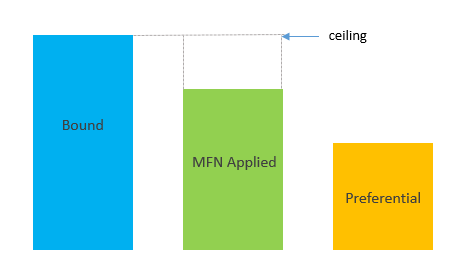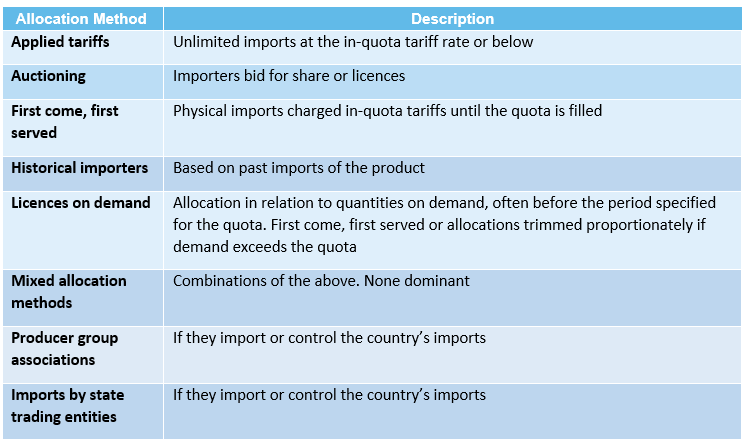Analyst Insight: Tariffs and Tariff Rate Quotas
Monday, 19 August 2019
Tariffs? Tariff rate quotas? Allocations? We increasingly hear these terms as we approach 31 October Brexit deadline. However, is their meaning fully understood? Read on for an overview and explanation of different tariff types, quotas and allocation methods.

Quota’s vs. Tariff Rate Quota’s
While tariff rate quota’s (TRQ’s) are often referred to as quotas, they are technically not exactly the same thing.
A quota is the volume of product/service that is allowed to be imported into a country in a given time. Once the quota is reached, further imports are not possible.
Tariff rate quotas (TRQ’s) -within the TRQ, a set amount of a specific product may be imported at zero (duty-free) or low tariff rates. Outside of the tariff rate quota, the tariff rate is much higher. Importing outside of the TRQ is not impossible, but very likely unprofitable.
Tariffs applied within TRQ’s are known as preferential tariffs. Outside of TRQ’s, and if no trade agreement is in place, WTO members will revert to Most Favoured Nation (MFN) tariffs.
Different types of tariffs
Three types of tariff may exist for each commodity line.
Different forms of import tariffs
A tariff may take several forms, regardless of whether it is bound or applied:
How are TRQ’s allocated?
There are a number of ways TRQ’s can be allocated, and these can vary depending on the trading partner. An allocation works like an account.
What tariff rates are currently in place for importing into the EU?
A comprehensive list of commodities and their bound tariff rate is published on the AHDB website. This table reflects the current UK position and the maximum (bound) EU tariff rate (i.e. the UK will levy a zero tariff rate on EU cereals & oilseeds imports, not necessarily to be reciprocated by other EU Member States).

Sign up for regular updates
You can subscribe to receive Grain Market Daily straight to your inbox. Simply fill in your contact details on our online form and select the information you wish to receive.





